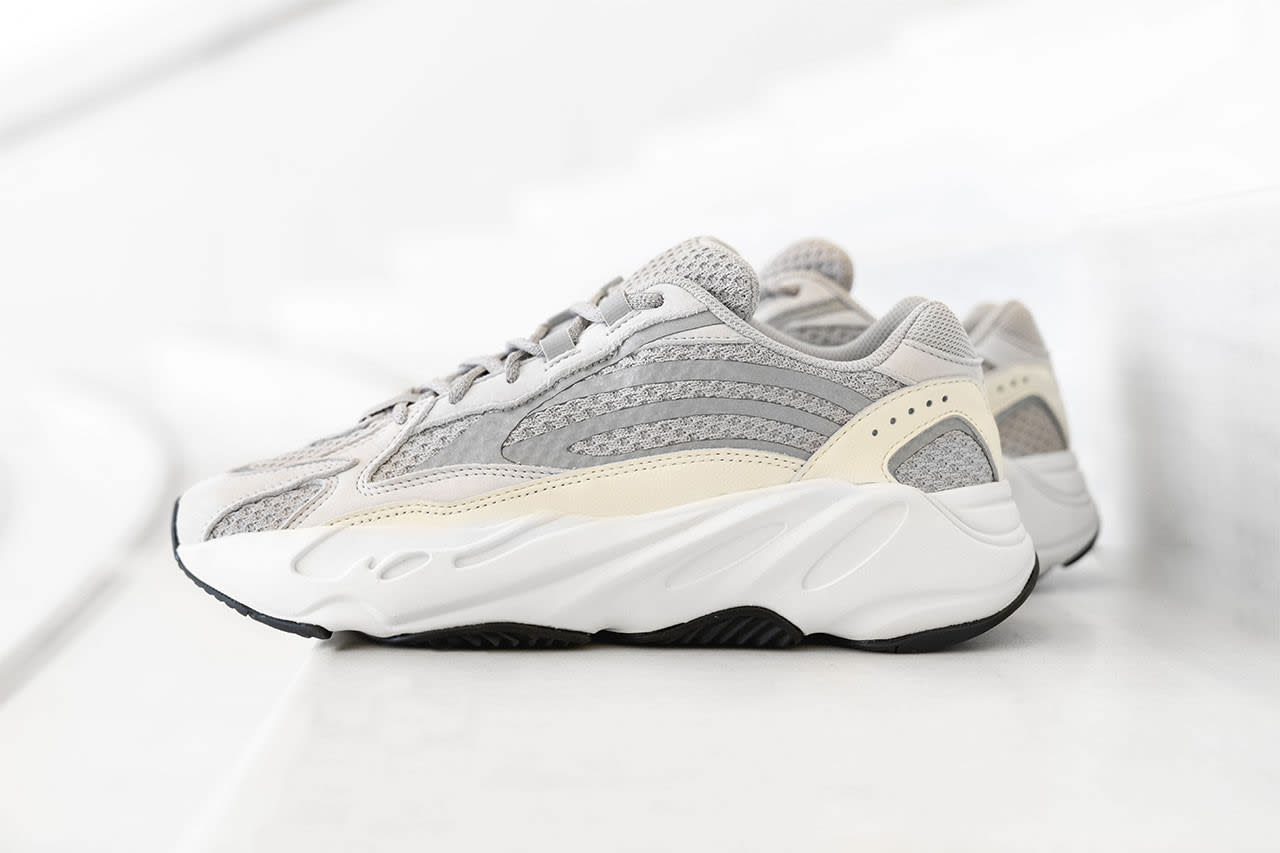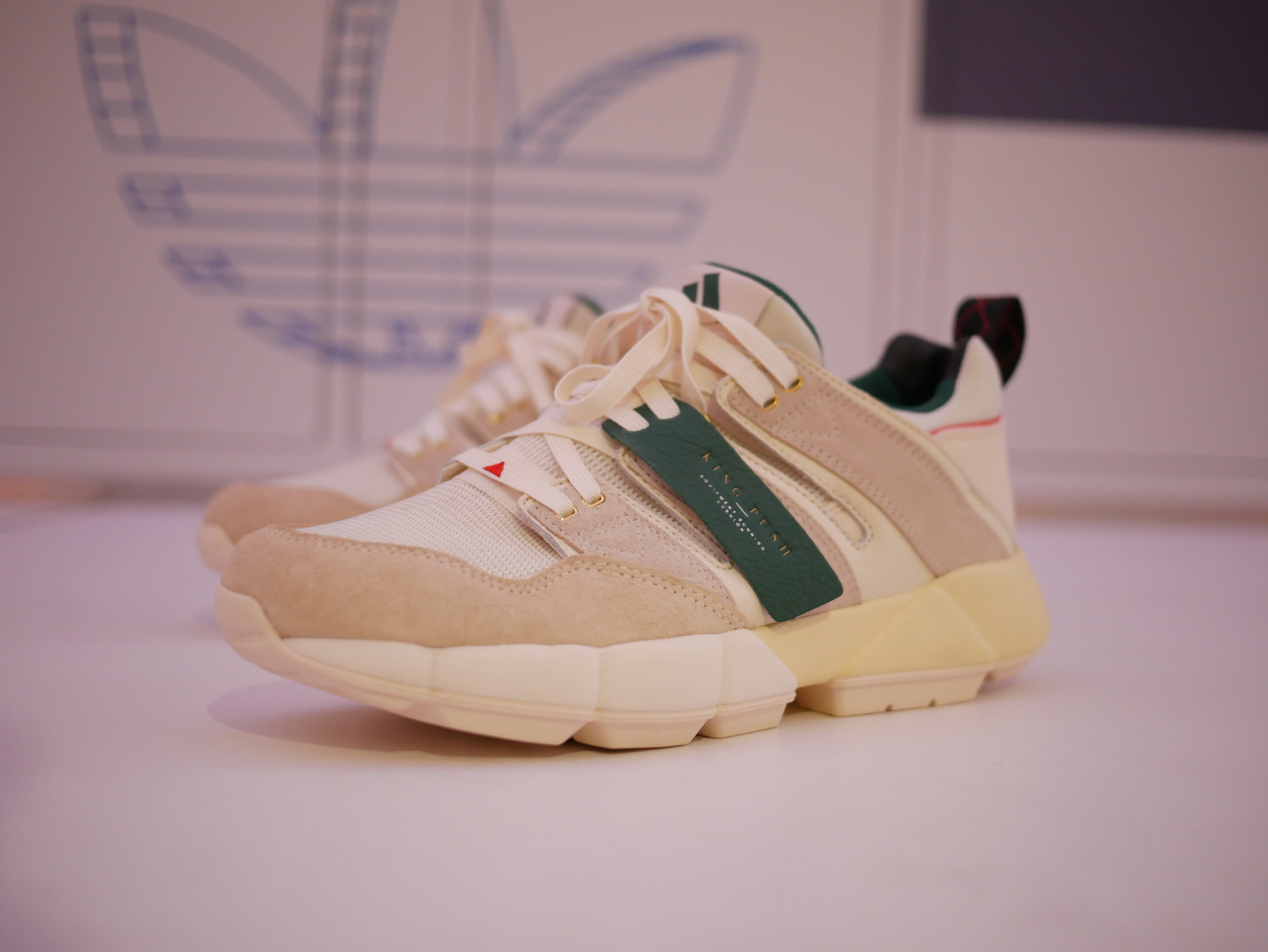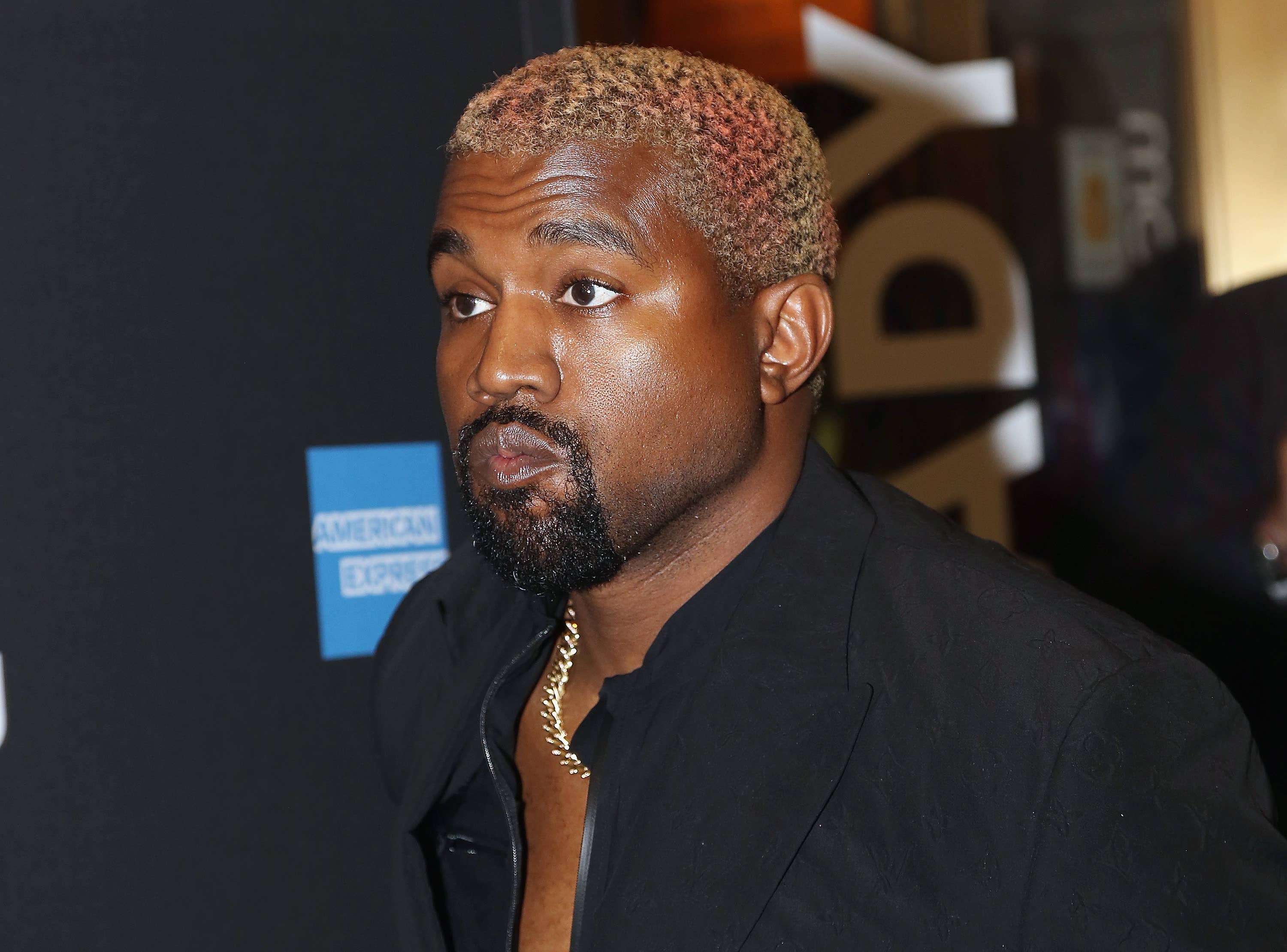
There’s a reason why a lot of teams who fall behind in sports and mount comebacks end up falling short—they’ve run out of gas. All of the energy they used to catch up to whoever is in the lead wasn’t enough to surpass the eventual victor. The same can be said for Adidas as of late in its quest to dethrone Nike as the king of the footwear industry, and it’s become apparent by the brand’s showing in 2018.
Nearly every major and minor publication has written about Adidas’ resurgence in the footwear industry, specifically North America, since the brand made a concerted effort in 2014 to change direction and connect with consumers who only preferred to wear Swooshes on their feet. Here’s a brief rundown of how that happened.
The brand relaunched the Stan Smith towards the tail end of 2013 after removing the model from circulation for several years. It was a massive hit to say the least. The brand then scooped Kanye West away from Nike, whose relationship with the brand’s CEO, Mark Parker, had run its course and soured to an irreconcilable stalemate. Adidas was able to introduce its newest cushioning system, Boost, into the market through the Energy Boost, PureBoost, and UltraBoost and gained major headway through seemingly every shoe they put the styrofoam-like midsole on. The brand embraced fashion collaborators as well, such as Alexander Wang, and gave rappers and artists—Pharrell, Pusha T, and Asap Ferg to name a few—sneakers and embraced them as true partners in the headspace of the company.

People, mainly disenfranchised or enthusiastic consumers, believed that Adidas was on their side. The brand wasn’t just making shoes, but connecting with folks who felt Nike was no longer speaking to them. And Adidas skyrocketed in sales. The brand eventually overtook Jordan Brand in 2017 as the second-biggest footwear brand in North America. Shoes not only sold out, but the value skyrocketed on Yeezys, limited-edition UltraBoosts, and anything that the internet deemed as cool. Putting on a pair of trackpants with the Three Stripes on them and walking around New York City’s SoHo neighborhood let people know that you were clued in on trends. The brand also made the NMD sneaker, a combination of three archival models, that was a sock-like lifestyle shoe with Boost cushioning and created it in a trillion different colorways. They all sold out. It forced Nike’s hand, and the brand made the LunarCharge, which followed the same design formula and absolutely fucking sucked.
Nike started to feel the pressure. Adidas was gaining marketshare and the media was reporting on how the brand turned things around. Everyone had a story on the brand’s comeback. Was it due to Kanye West? Or was it Nike’s fault for first passing on Boost technology from BASF? No, it was the strategic signings of the brand’s director of entertainment marketing, Jon Wexler. Or it was that Nike had become stagnant as a company and hadn’t paid attention to other brands or what consumers wanted and fallen out of touch with its overpriced, non-innovative shoes?
The company was doing so well that its increased hiring at its Portland, Oregon, headquarters that local residents were complaining about parking issues. Adidas also scooped three designers—Marc Dolce, Denis Dekovic, and Mark Miner—from Nike and planned to use them to launch the Brooklyn Farm, a design center in New York City that was to be the epicenter of the brand’s innovation going forward.
Just as all this momentum started to happen for Adidas up to 2016—the Adidas Superstar was the best-selling shoe of the year—reality started to set in. Or maybe Nike started to punch back. The brand launched both VaporMax and React cushioning technologies to combat Boost, but also started to tap into what the diehard Nike consumer would want in 2017. That meant giving people the Virgil Abloh’s interpretation of 10 different Nike and Jordan shoes. Relaunching the Air Force 1 in a meaningful way and showing it off at ComplexCon. Giving Kaws his own Air Jordan. Reinventing LeBron James’ once-dominant signature series by putting knit on the shoes and giving him a collaboration with Ronnie Fieg. Travis Scott got a Nike and an Air Jordan, and even somehow found a way to make Jordan Brand not suck as much anymore.
Meanwhile Adidas was still making sock sneakers in 100 different varieties, even if the sneakerhead market had long moved beyond them. The brand started to produce 3D and 4D-printed soles, but weren’t able to make them at a mass clip—so much so that the idea hasn’t really registered on a mainstream level yet. Its partnership Pharrell has been brilliant in small segments, but also has lead to very mediocre shoes (the Tennis HU, Solar HU) and keeps beating the same idea of the HU NMD into the ground.

Adidas also bet on a few new silhouettes: The Prophere, which weighs roughly 75 lbs per shoe, and the Deerupt, which is a budget NMD that looks like it got caught in a fisherman’s net. Both shoes absolutely screwed the pooch at retail. The industry was also shifting. With sock shoes dead, chunky shoes were back in. Adidas reflected this in the Yeezy line and with several inline runners, but overall the sock-like aesthetic ran strong with the brand. Nike played this smart by putting energy behind the Air Monarch, its best-selling dad shoe, and making cool-guy versions of it. This could also be seen with Air Max retros such as the 97, 98, and the Air Max Deluxe. Nike also played things smart by giving Fear of God designer Jerry Lorenzo his own performance basketball shoe. Betting on grime artist Skepta to deliver three Air Max sneakers. Putting faith back in Amsterdam sneaker OGs Patta, giving Parra another Air Max 1, and even further expanding Abloh’s ongoing collaboration.
It’s also hard not to mention the faith that Nike put into Sean Wotherspoon, the reseller behind Round Two, a consignment shop with several locations, and gave him his own Air Max sneaker. The shoe was a mashup between the Air Max 1 and 97 and quickly became one of the brand’s most hyped offerings in years.
Adidas was still going strong with its Yeezy line, but even the brand’s big plays from a few years ago, like signing James Harden to a massive deal, now started to fade in relevance. Simple classic shoes such as the Stan Smith, Superstar, Gazelle, and Campus were still selling, but lacked the cultural impact that they had three to five years ago. Adidas put a huge push behind bringing the UltraBoost back in its original form, but the shoe was only three years old and there was hardly any nostalgia for it. It reeked of desperation—not something the market needed at the time.
Adidas was putting more Yeezys into production, which helped a lot in the first half of 2018, but as Kanye West’s behavior became more erratic and he publicly supported President Donald J. Trump, the sales of his shoes cooled down. So did the resale value on the newer versions. Some might say it was just because Adidas was making more of them than ever, which is true. But you can’t overstate that overly relying on West to be the brand’s savior was putting all of its eggs in one basket.

And we can’t forget the rap beef between Adidas signee Pusha T and Drake, that resulted in the revelation that Adidas had signed Drake to a deal and that it was going to be named after his illegitimate son, which he hadn’t told the world about yet. It blew the deal up. There was no official word from either camps, but it appeared that this unveiling ultimately played a role in the deal falling apart. Talk about missing out on a big opportunity, even if Drake has zero connection to Adidas and seemed like a forced fit for the company.
But here’s the biggest reason why Adidas isn’t making waves in 2018. The product just isn’t there at the end of the day. The storytelling is lacking. You can’t keep taking old shoes that U.S. consumers have no connection to (you can allegedly thank Adi Dassler’s son, Horst Dassler, for not spreading more of the range of the brand in the ‘80s) and expect people to be enthralled by a shoe that looks just like another shoe that came out. The reason why a lot of the Yeezy stuff worked was because it didn’t look like other stuff from the brand, but everything from Adidas soon started looking like a Yeezy. There’s only so many times that you can execute the same trick and expect the same return. It’s like doing a 360 flip in Tony Hawk Pro Skater for the 100th time and wondering why you’re only getting five points now. Nobody wants to see another pair of Yeezy Boost 350s. I’m not one to back up Drake and think it’s wildly corny for him to rap, “Don’t wear no 350s ‘round me.” But if your shoes are becoming the butt of punchlines, you need to switch it up.

The Yeezy 700 is great. The Yeezy 500 is great. People like these shoes, even if they’re not selling out as quickly as they had before. But the brand needs new and innovative collaborations. If A Bathing Ape x Adidas sounds tired in 2018, then that’s a problem. I know it took a lot for Adidas to get where it is now, and it never expected to gain the success it had a few years ago, but that doesn’t mean you can now execute ideas that would have hit 24 months ago. Nobody wants an Engineered Garments UltraBoost in 2018. Nobody wants anything from White Mountaineering. And the name Hender Scheme hasn’t been mentioned with relevance in years. If the brand’s biggest fashion attraction is Alexander Wang, that’s a problem. I haven’t heard people talk about him since his H&M collaboration.
Adidas had a huge showing at All-Star Weekend, but it was more about a hoopla and performance than any sort of tangible product.
Adidas needs to pick the right collaborators, not just any collaborators that fit the bill. That’s where Nike is winning. It’s tough to realize the brand’s most authentic project of the year was its collection with CP Company, that sold out overseas but had little buzz in the U.S. If there were higher-profile collaborations from the brand this year, it would have been awesome to slide that collection in the mix. Adidas made a huge Dragon Ball Z collection this year and put it all, or at least most of it, on shoes that no one cared about. Adidas launched a shoe called "POD," and I haven't seen anyone wear them in public who didn't get a free pair. The Kamanda and Sobakov were released around the World Cup and were supposed to redefine terrace culture, but I've never seen anyone wear them to the football.
If Drake, the most popular rapper in the land, is saying things like, "Checks over stripes," it has to make a brand worry.
For the record, getting involved in beef over allegiance to footwear brands makes someone a complete cornball. But a year or two ago we had a legion of "Boost Boys" and they have all disappeared off the Internet.
Jonah Hill is trying to bring energy to Adidas. It’s not going to be the end all be all for the company, but it helps. It just feels like the brand was trying to associate with anyone it deemed cool instead of finding strategic partnerships. The reasons these connections fade out is because the influencers don’t care about the label after the checks disappear. Trust me, there’s no one that wants to see Adidas do well more than me. It’s all I wear, and it’s not because of Boost or Kanye West or because they’ve paid me (they haven’t).
My favorite shoe of the year is the Adidas ZX 4000 in the O.G. colorway, even if no one else agrees with me, and the Spezial line was great this year.
Adidas grew too fast for its own good, hired a bunch of designers who kept spitting out the same versions of what made them money before, and wondered why people started to like Nike again once the brand got its shit together. It’s not hard to see how that’s a recipe for disaster. The sky isn’t falling for Adidas right now, but it desperately needs to rethink things, not make another sock shoe, and use the resources you already have in your possession. If you have the Kardashian Family on your side, it won’t be hard to market things. I imagine that Kylie Jenner wearing the Falcon shoe has caused Adidas to sell a few pairs. But Adidas needs the next product that’s going to feel like the next Ultra Boost or NMD or Yeezy Boost, not just another shoe that looks like one of three.

